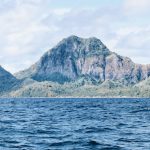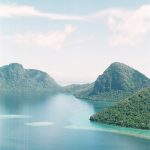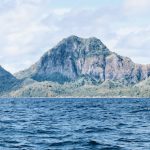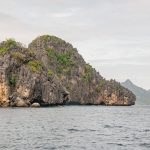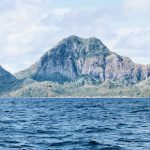Exploring the Beauty of Palawan: A Must-Visit Destination
Description
Palawan, often referred to as the “last frontier” of the Philippines, is an archipelago that captivates visitors with its stunning landscapes and rich biodiversity. Stretching over 1,700 kilometers, this province is home to more than 1,700 islands and islets, each offering unique experiences and breathtaking views. The capital city, Puerto Princesa, serves as the gateway to the wonders of Palawan, where travelers can embark on adventures that range from exploring underground rivers to diving in crystal-clear waters.
The province’s natural beauty is complemented by its vibrant culture and history, making it a multifaceted destination for tourists seeking both relaxation and adventure. The allure of Palawan lies not only in its picturesque scenery but also in its commitment to preserving its natural environment. Recognized as a UNESCO World Heritage Site, the Puerto Princesa Subterranean River National Park is one of the most famous attractions in the region.
This park features a remarkable underground river that flows through a limestone cave system, showcasing stunning rock formations and diverse ecosystems. As visitors navigate through the park, they are often struck by the harmony between nature and the efforts made to protect it. Palawan’s unique geography, characterized by limestone cliffs, lush forests, and pristine beaches, creates an idyllic setting for those looking to escape the hustle and bustle of urban life.
Key Takeaways
- Palawan is a stunning island province in the Philippines known for its natural beauty and rich cultural heritage.
- The natural wonders of Palawan include the UNESCO World Heritage-listed Puerto Princesa Subterranean River National Park and the breathtaking limestone cliffs of El Nido.
- Visitors can explore cultural and historical attractions such as the Tabon Caves, known as the “Cradle of Philippine Civilization,” and the historic Spanish colonial architecture in the town of Taytay.
- Adventure and outdoor activities in Palawan range from snorkeling and diving in the crystal-clear waters to hiking through the lush forests and exploring hidden lagoons.
- Local cuisine in Palawan offers a diverse range of flavors, including fresh seafood, traditional Filipino dishes, and unique dining experiences such as dining in a floating restaurant on the Iwahig River. Sustainable tourism initiatives in Palawan aim to preserve the natural environment and support local communities, offering responsible travel options for visitors.
Natural Wonders of Palawan
Exploring El Nido’s Lagoons and Beaches
El Nido, a popular destination within the archipelago, boasts the famous Big Lagoon and Small Lagoon, renowned for their breathtaking beauty. Here, visitors can kayak through crystal-clear waters surrounded by towering limestone cliffs.
Tubbataha Reefs Natural Park
Another remarkable natural wonder is the Tubbataha Reefs Natural Park, a UNESCO World Heritage Site celebrated for its exceptional coral reefs and diverse marine biodiversity. Situated in the Sulu Sea, this remote park is accessible only by liveaboard boats and is considered one of the world’s best diving spots. Divers can encounter a diverse array of marine species, including sea turtles, manta rays, and coral gardens. The park’s isolation has helped preserve its pristine condition, making it a sanctuary for marine life and a must-visit for those passionate about underwater exploration.
Cultural and Historical Attractions

Palawan’s cultural and historical attractions provide a glimpse into the rich heritage of its indigenous communities and colonial past. The province is home to several indigenous groups, including the Tagbanua and Batak people, who have lived in harmony with nature for centuries. Visitors can engage with these communities through cultural tours that showcase traditional practices, crafts, and rituals.
In addition to its indigenous culture, Palawan has a significant historical narrative shaped by Spanish colonization. The city of Puerto Princesa features several historical landmarks that reflect this colonial influence.
One notable site is Fort Santa Isabel, built in the 19th century to protect the city from pirate attacks. Today, it stands as a testament to Palawan’s strategic importance during the Spanish era. Another important historical site is the Immaculate Conception Cathedral, which showcases beautiful neo-gothic architecture and serves as a spiritual center for the local community.
Exploring these sites allows visitors to appreciate the province’s complex history while gaining insight into its cultural evolution.
Adventure and Outdoor Activities
| Activity | Participants | Revenue |
|---|---|---|
| Hiking | 10,000 | 500,000 |
| Camping | 8,000 | 400,000 |
| Rock Climbing | 5,000 | 300,000 |
| Kayaking | 7,000 | 350,000 |
For those seeking adventure, Palawan offers an abundance of outdoor activities that cater to various interests and skill levels. Island hopping is one of the most popular activities among tourists, allowing them to explore multiple islands in a single day. Tour operators provide guided tours that take visitors to hidden lagoons, secluded beaches, and snorkeling spots rich in marine life.
The experience of hopping from one island to another while soaking in the sun and enjoying the stunning scenery is truly unforgettable. Hiking enthusiasts will find plenty of opportunities to explore Palawan’s lush landscapes. The trek to Mount Iglit-Baco National Park offers breathtaking views of the surrounding mountains and valleys.
This national park is home to diverse flora and fauna, including endemic species that can only be found in this region. For those looking for a more challenging hike, the journey to Mount Pulag provides an exhilarating experience as trekkers ascend to one of the highest peaks in Luzon. The panoramic views from the summit are well worth the effort.
Local Cuisine and Dining Experiences
Palawan’s culinary scene is as diverse as its landscapes, offering a delightful array of flavors influenced by local ingredients and cultural traditions. Seafood lovers will be in paradise as fresh catches from the surrounding waters are transformed into mouthwatering dishes. One must-try delicacy is “Tamilok,” a type of woodworm that is often served raw with vinegar or cooked in various preparations.
This unique dish reflects the local culture’s connection to the sea and showcases the adventurous spirit of Palawan’s cuisine. In addition to seafood, Palawan’s dining experiences often highlight traditional Filipino dishes that are prepared with a local twist. “Kinilaw,” a Filipino ceviche made with fresh fish marinated in vinegar and citrus juices, is a popular choice among locals and tourists alike.
Many restaurants also offer “lumpiang ubod,” a spring roll filled with heart of palm and served with a savory sauce. Dining in Palawan often takes place in open-air settings with stunning views of the ocean or lush landscapes, creating an inviting atmosphere that enhances the overall experience.
Sustainable Tourism in Palawan

Environmental Stewardship in Accommodations
One notable example of sustainable tourism in Palawan is the promotion of eco-friendly accommodations that prioritize environmental stewardship. Many resorts and lodges have adopted green practices such as using solar energy, minimizing plastic waste, and supporting local farmers by sourcing ingredients from nearby communities. Additionally, community-based tourism initiatives empower local residents by providing them with opportunities to share their culture and traditions with visitors while benefiting economically from tourism activities.
Conservation Efforts
The commitment to sustainable tourism extends beyond accommodations; it also encompasses conservation efforts aimed at protecting marine life and habitats. Organizations work tirelessly to raise awareness about responsible diving practices and promote coral reef restoration projects.
A Sustainable Tourism Destination
In conclusion, Palawan stands out as a destination that seamlessly blends natural beauty with cultural richness. Its diverse offerings—from stunning landscapes and outdoor adventures to delectable cuisine—make it an ideal location for travelers seeking both relaxation and excitement. As sustainable tourism continues to gain traction in this enchanting province, visitors can enjoy their experiences while contributing positively to the preservation of Palawan’s unique heritage for generations to come.
If you’re planning a trip to Palawan, you may also be interested in learning about online football betting strategies. Check out this article for a winning guide on mastering online football with TG777. It’s always good to have some extra cash for your travels, and online betting could be a fun way to earn some extra money.
FAQs
What is Palawan known for?
Palawan is known for its stunning natural beauty, including pristine beaches, crystal-clear waters, limestone cliffs, and lush jungles. It is also home to diverse marine life and is a popular destination for snorkeling and diving.
What are the top attractions in Palawan?
Some of the top attractions in Palawan include the UNESCO World Heritage-listed Puerto Princesa Subterranean River National Park, the stunning limestone formations of El Nido, and the beautiful beaches of Coron. Other popular activities include island hopping, snorkeling, and visiting the indigenous communities.
How do I get to Palawan?
Palawan can be reached by air from Manila or Cebu, with flights to Puerto Princesa, El Nido, and Coron. There are also ferry services from Manila and other islands in the Philippines to Palawan.
What is the best time to visit Palawan?
The best time to visit Palawan is during the dry season, which typically runs from November to May. This is when the weather is most favorable for outdoor activities and beach excursions.
Is Palawan safe for tourists?
Palawan is generally considered safe for tourists, but it is always important to exercise caution and be aware of your surroundings. It is advisable to follow local customs and regulations, and to take necessary precautions when engaging in outdoor activities.

